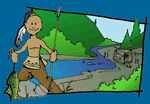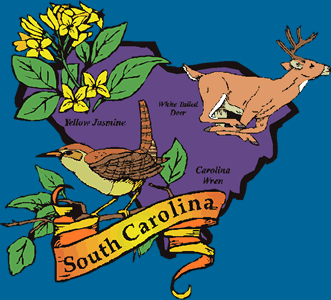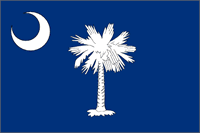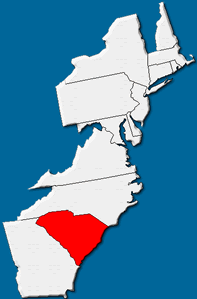


Geography and Landforms:
Three geographic land areas define South Carolina; the Atlantic Coastal Plain (comprising two thirds of the state), the Piedmont, and the Blue Ridge region. South Carolinians simplify this somewhat by referring to the eastern Atlantic Coastal Plain as the Low Country and the Piedmont and the Blue Ridge region as Up Country.
|
 History:
In 1520, Spanish explorer Lucas Vasquez Ayllon explored the area near Pawley's Island. The group took about 140 Native Americans as slaves including one man they named Francisco Chicora. Chicora was taken to Spain and taught Spanish. In 1523, he was brought back to the area to assist in establishing a colony, but escaped soon after his arrival. Following exploration of the coast in 1521 by Francisco de Gordillo, the Spanish tried unsuccessfully to establish a colony near present-day Georgetown in 1526. The French also failed to colonize Parris Island near Fort Royal in 1562 with the assistance of the Cusabo Indians.
|
 Economy:
In the late 18th century, South Carolina was one of the most prosperous of the original thirteen colonies. With the invention of the cotton gin in the early 19th century, cotton became a major crop for the state. However, the Civil War, and the end of the plantation system supported by slaves, devastated the South Carolina economy.
|
 First Inhabitants:
For thousands of years before European settlers arrived in present-day South Carolina, the state was occupied by Native Americans. At least 29 distinct tribes of Indians lived within South Carolina. During the Woodland period, beginning around 3,000 years ago, Native Americans began to use pottery, and settle in semi-permanent villages. Archaeologists have found evidence that these people buried their dead in large earthen mounds and practiced religious rituals. By around 500 years ago, native people were farming corn, beans and squash, and trading tools, jewelry and ceremonial objects. |
Books Related To South CarolinaBeautiful Creatures - Kami Garcia Carolina's Story: Sea Turtles Get Sick Too - Donna Rathmell German The Coastwatcher - Elise Weston Darby - Jonathon Scott Fuqua Miles' Song - Alice McGill Miles' Song - Alice McGill P is for Palmetto: A South Carolina Alphabet - Carol Crane |
Famous Citizens:
|
| Capital: | Columbia |
| Entered Union: | May 23, 1788 |
| Population: | 4,832,482 |
| Area | 32,020 |
| Bird | Great Carolina Wren |
| Flower | Yellow Jessamine |
| Nickname: | Palmetto State |
| Governor | Nikki R. Haley |
Places to Visit in South Carolina: (Click the links to learn more.)
|



